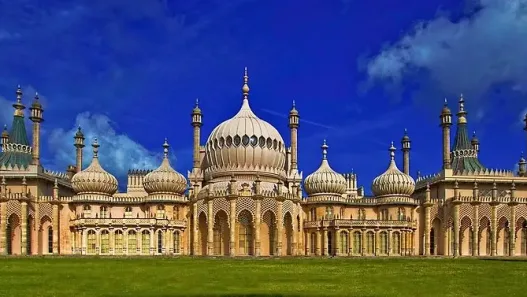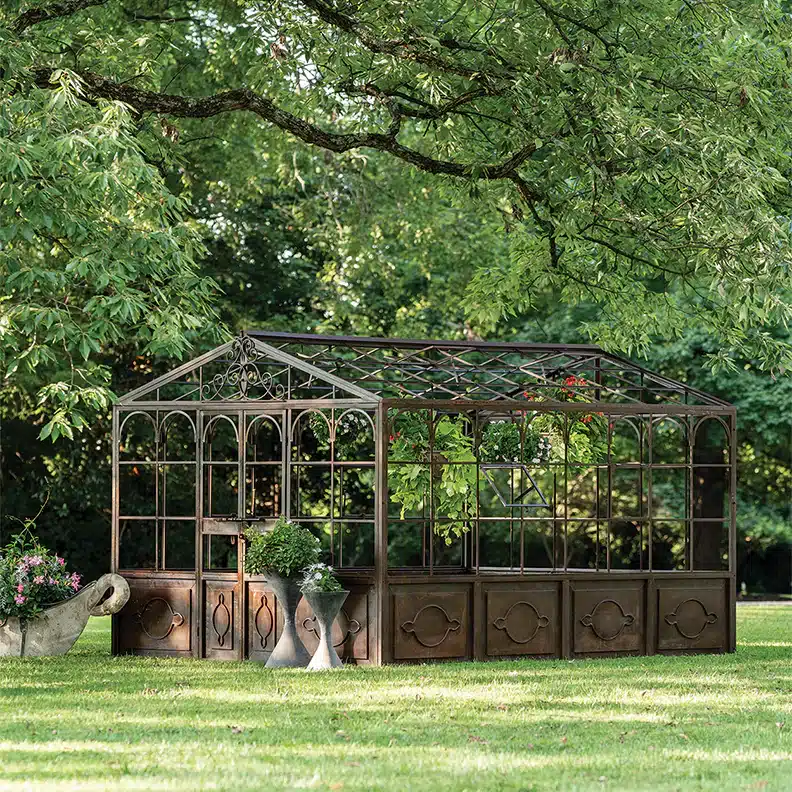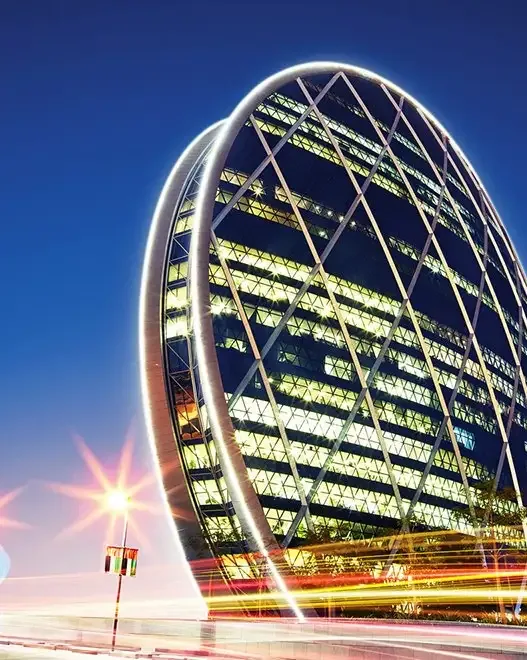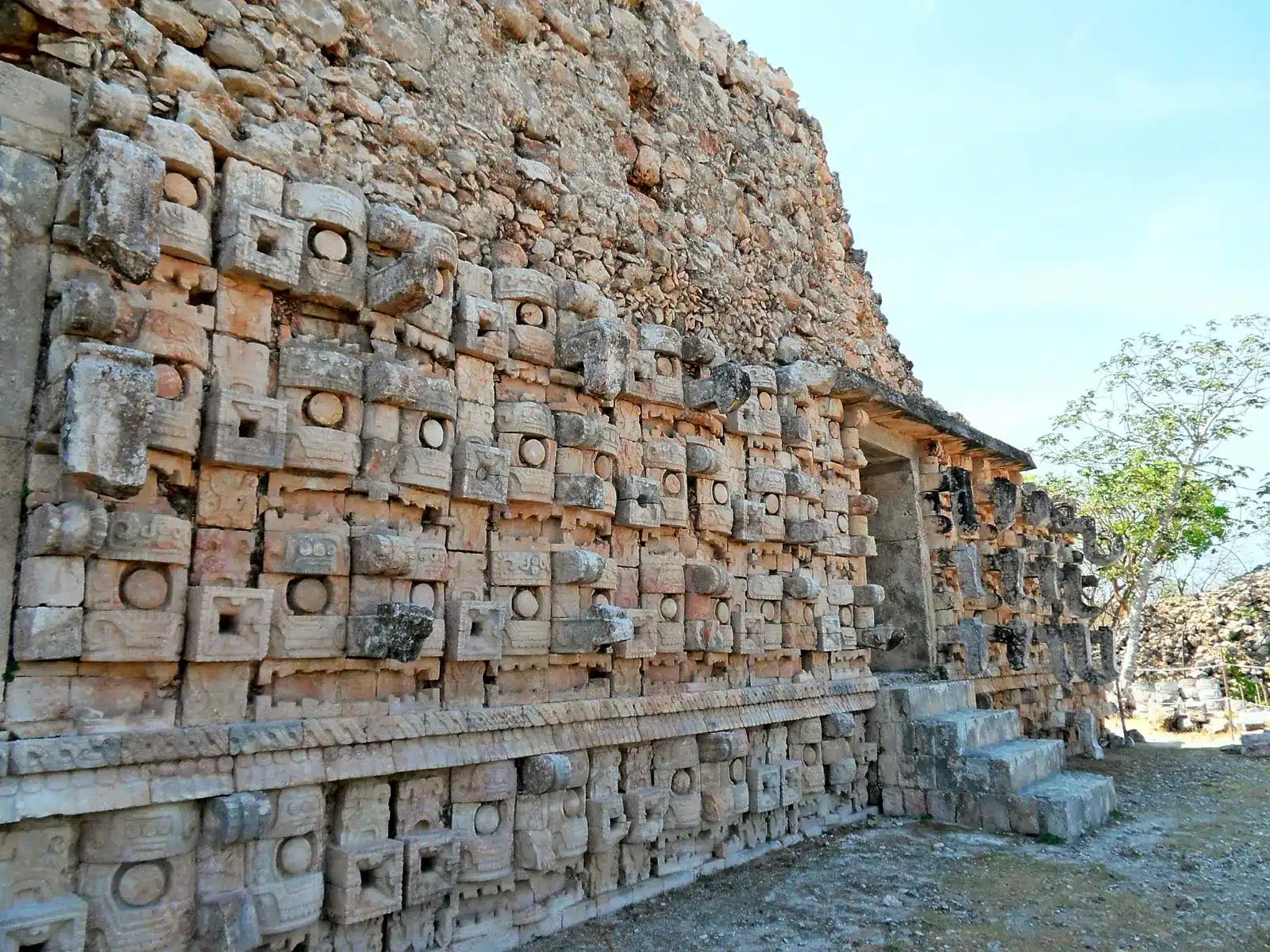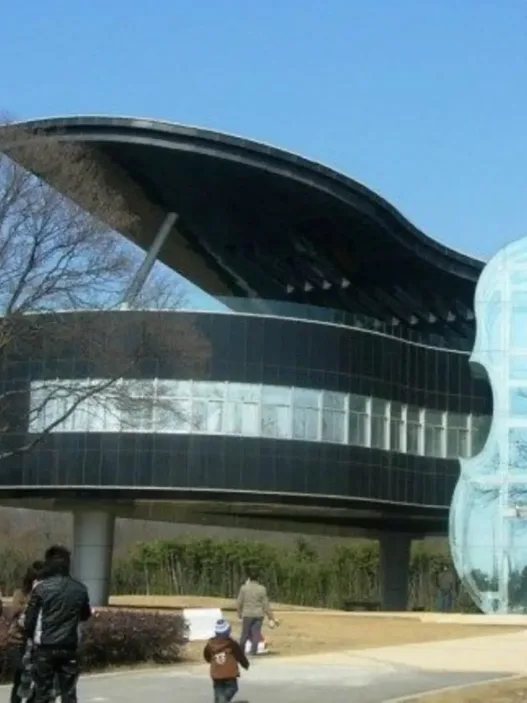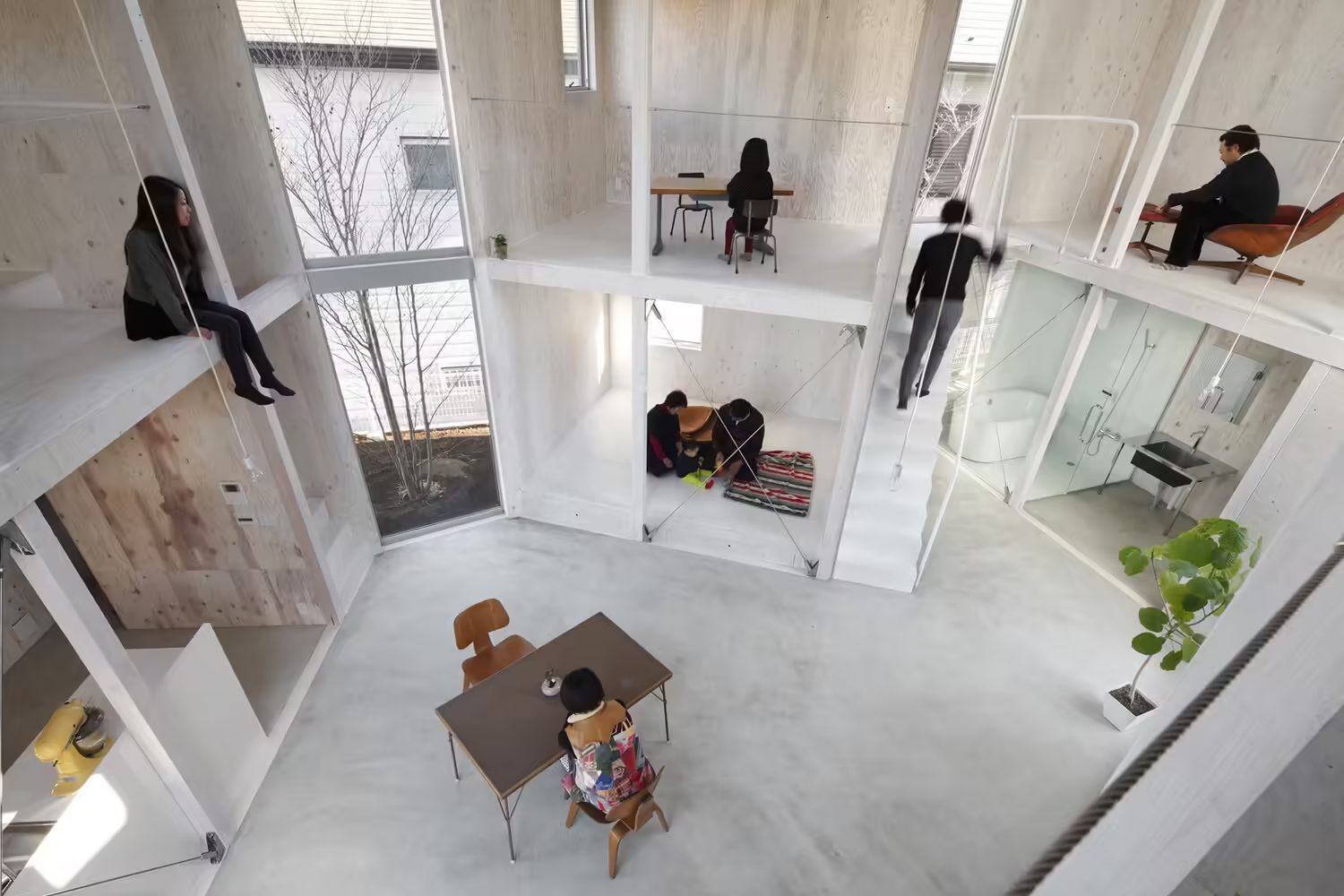In our rapidly changing world, the intersection of architecture and renewable energy is more important than ever. As climate change poses a major threat, architects and builders are increasingly turning to sustainable practices that harness the power of natural resources. This blog post will explore the vital role renewable energy plays in architecture, why sustainability is essential and how modern practices have evolved over time. It will also touch on the historical context of energy use in buildings, providing a comprehensive understanding of how far we have come and where we are going.

Definition of Renewable Energy
Renewable energy refers to power derived from naturally renewable sources. These include sunlight, wind, rain, tides, waves and geothermal heat. Unlike fossil fuels, which are finite and contribute to environmental degradation, renewable energy sources offer a sustainable alternative that can significantly reduce carbon footprints. Renewable energy in architecture is often integrated through technologies such as solar panels, wind turbines and geothermal systems, allowing buildings to generate their own electricity and reduce dependence on external power sources.
The Importance of Sustainability
Sustainability in architecture goes beyond simply using renewable energy; it encompasses a holistic approach to design and construction that prioritizes environmental stewardship, social equity and economic viability. As buildings account for a significant portion of global energy consumption and greenhouse gas emissions, the adoption of sustainable practices is crucial. By using renewable energy, architects can create buildings that not only minimize environmental impacts but also enhance the well-being of occupants and society. Sustainable architecture aims to ensure the development of future generations by creating harmony between the built environment and nature.
Overview of Modern Architectural Practices
Modern architectural practice has changed dramatically in recent years, driven by advances in technology and a growing awareness of environmental issues. Architects are now taking an interdisciplinary approach, collaborating with engineers, urban planners and environmental scientists to create innovative designs that integrate renewable energy solutions. Passive solar design, for example, utilizes sunlight for natural heating and lighting, reducing the need for artificial energy. Furthermore, green roofs and walls not only contribute to biodiversity, but also improve insulation and reduce energy consumption. The use of sustainable materials such as reclaimed wood and recycled metals further enhances the environmental identity of modern buildings.
Historical Context of Energy Use in Buildings
To understand the current state of energy use in architecture, it is crucial to look to the past. For centuries, buildings were designed with local climates in mind, using natural ventilation and orientation to maximize comfort without relying too much on mechanical systems. However, the Industrial Revolution was a turning point, and the proliferation of fossil fuels led to an increase in energy consumption. This shift resulted in buildings that prioritized convenience and efficiency over sustainability, often neglecting environmental consequences. Today, as we confront the legacy of these choices, there is a renewed focus on returning to the principles of energy conscious design, emphasizing the importance of renewable resources.
Goals of the Blog Post
The aim of this blog post is to illuminate the critical relationship between renewable energy and architecture. By exploring definitions, historical context and modern practices, we aim to inspire readers to appreciate the importance of sustainability in building design. Understanding these concepts can empower individuals, whether architects, builders, or simply curious minds, to make informed choices that will contribute to a healthier planet. As we move forward, the integration of renewable energy into architecture will not only shape our skylines, but will also impact our collective future by promoting a world where buildings coexist in harmony with the environment.
Key Renewable Energy Technologies
Renewable energy technologies play a crucial role in addressing global challenges such as climate change, energy security and sustainable development. Harnessing ever-renewing natural resources such as sunlight, wind and organic matter, these technologies offer innovative solutions to meet our energy needs while minimizing environmental impact. This section examines several key renewable energy technologies, discussing how they work, their benefits and real-world applications.
Solar Energy Solutions
Solar energy uses energy from the sun to generate electricity or heat. This technology has made significant advances over the years, making solar panels more efficient and affordable. In essence, photovoltaic (PV) technology converts sunlight directly into electricity using semiconductor materials such as silicon. When sunlight hits these materials, it excites electrons, creating an electric current.
Beyond PV, solar thermal systems use sunlight to heat water or air in residential and industrial applications. For example, in many sunny regions, solar water heaters are common, providing hot water for homes and businesses without relying on fossil fuels. Large-scale solar farms, where vast arrays of solar panels generate electricity for thousands of homes, are becoming increasingly popular.
Solar adoption is widespread, with countries such as Germany and the United States leading the way in installations. With ongoing research and development, solar technology continues to evolve and promises even more efficient and cost-effective solutions to provide sustainable energy to our world.
Wind Energy Integration
Wind energy is another powerful renewable resource that harnesses the kinetic energy of the wind to generate electricity. Wind turbines, often seen on farms and in coastal areas, convert wind movement into mechanical energy, which is then converted into electricity. The efficiency of wind energy has increased significantly and modern turbines can generate electricity even at low wind speeds.
Integrating wind energy into the electricity grid poses some challenges, especially due to the variability of wind. However, advances in grid management and energy storage technologies have made it easier to balance supply and demand. Countries such as Denmark and Spain have successfully integrated a large proportion of wind energy into their electricity systems, demonstrating the potential of wind as a primary energy source.
Wind farms can also coexist with agriculture, allowing for dual land use. For example, farmers benefit from the additional income generated by renting land for wind turbines while continuing their agricultural practices. This synergy demonstrates the versatility and potential of wind energy to contribute to a sustainable future.
Geothermal Heating and Cooling
Geothermal energy harnesses the Earth’s internal heat, providing a reliable and consistent source of energy. This technology can be used for both electricity generation and direct heating applications. In geothermal power plants, steam produced from heated groundwater drives turbines to generate electricity. Areas with significant volcanic activity, such as Iceland and parts of the United States, are particularly suitable for geothermal power generation.
Furthermore, geothermal systems can be used to heat and cool buildings through geothermal heat pumps. These systems use the constant temperatures found several meters below ground to heat homes in winter and cool them in summer. This technology is not only energy efficient, but also reduces dependence on traditional heating and cooling methods, leading to lower electricity bills.
The low environmental impact and high reliability of geothermal energy make it an attractive option for both urban and rural areas. As more countries prioritize sustainability, geothermal energy is poised to play an important role in our energy mix.
Biomass and Biofuels
Biomass energy converts organic matter, such as plant and animal waste, into usable energy. This process can take place through combustion, fermentation or anaerobic digestion and can produce electricity, heat or biofuels. Biomass is a versatile resource; it can be derived from agricultural residues, forestry products and even municipal waste.
Biofuels derived from biomass offer a renewable alternative to fossil fuels for transportation. Ethanol, often blended with gasoline, and biodiesel from vegetable oils are popular examples. These fuels can significantly reduce greenhouse gas emissions compared to conventional fuels, making them a vital component of efforts to combat climate change.
Countries such as Brazil have invested significantly in biofuel production, demonstrating its potential as a sustainable energy source. Integrating biomass into the energy mix not only helps to reduce waste, but also supports local economies, especially in rural areas where agricultural practices thrive.
Energy Storage Systems
Energy storage systems are essential to maximize the potential of renewable energy technologies. As renewable resources such as wind and solar are intermittent, effective storage solutions are crucial to ensure a stable energy supply. Batteries, pumped hydro storage and thermal storage systems are common techniques used to store excess energy generated during peak production times for later use.
Advances in battery technology, particularly lithium-ion batteries, have revolutionized energy storage, making it more efficient and affordable. These batteries are increasingly being used in residential solar installations, allowing homeowners to store excess energy for use on cloudy days or at night. Large-scale battery systems are also being used to stabilize grid operations and increase resilience to outages.
Energy storage not only supports the integration of renewable energy sources into the grid, but also enables consumers to manage their energy use more effectively. As technology advances, energy storage will become an integral part of a sustainable energy future, enabling a smoother transition to a low-carbon economy.
In conclusion, renewable energy technologies are transforming the way we approach energy production and consumption. Harnessing natural resources, these technologies offer innovative solutions to some of the most pressing challenges we face today. As we continue to explore and develop these technologies, the potential for a sustainable, clean energy future is increasingly within reach.
Case Studies of Architectural Masterpieces
Architecture is not just about buildings; it is about creating spaces that enhance our lives and reflect our values. These masterpieces demonstrate the interplay between innovative design, sustainability, functionality and aesthetics. Let’s take a look at five remarkable buildings that stand out in the modern architecture landscape.
The Edge, Amsterdam
The Edge in Amsterdam is often cited as one of the greenest and most innovative office buildings in the world. Completed in 2014, the building was designed by architecture firm PLP Architecture in collaboration with construction company OVG Real Estate. What sets The Edge apart is its emphasis on sustainability and technology, creating a model for the workplace of the future.
At first glance, The Edge looks like a sleek and modern building with its glass facade and sharp lines. However, its true brilliance lies within. The building features energy-efficient systems, including solar panels and rainwater harvesting, which significantly reduce its ecological footprint. Inside, the layout encourages collaboration and flexibility, with open spaces and common areas designed to foster creativity among employees.
A highlight of The Edge is its smart technology. The building uses a sophisticated app that allows employees to customize their work environment, from adjusting lighting to reserving meeting rooms. This emphasis on user experience not only boosts productivity, but also reflects a growing trend in workplace design.
The Edge is much more than an office building; it embodies a vision of sustainable urban development that prioritizes both people and planet.
Bosco Verticale, Milan
Bosco Verticale, or “Vertical Forest”, is a groundbreaking residential project that redefines urban living in Milan. Designed by architect Stefano Boeri and completed in 2014, this pair of residential towers is a striking example of integrating nature into city life. The towers are planted with more than 9,000 trees and thousands of plants, creating a living ecosystem that supports biodiversity.
From a distance, Bosco Verticale stands out for its lush greenery, which contrasts sharply with the surrounding concrete jungle. Each balcony is a mini garden, providing residents with a private slice of nature. This vertical forest not only enhances the aesthetic appeal of the buildings, but also contributes to improving air quality and reducing noise pollution.
Beyond its visual impact, Bosco Verticale serves as a model for sustainable living. The plants help regulate the temperature, reducing the need for air conditioning, and also capture rainwater, which can be used for irrigation. The project has inspired similar developments in other cities, proving that urban areas can embrace nature rather than push it away.
Bosco Verticale is a testament to how architecture can foster a harmonious relationship between urban environments and the natural world.
One Central Park, Sydney
One Central Park in Sydney is another remarkable example of blending architecture with nature. Designed by renowned architecture firm Architectus and landscape designer Patrick Blanc, this residential project features two striking towers rising above the city. Completed in 2014, the project is famous for its vertical gardens that create a striking visual impact.
The highlight of One Central Park is its breathtaking green walls, among the largest in the world. These walls not only beautify the buildings, but also play an important role in improving the quality of life for residents. By incorporating greenery into the design, the towers provide a sense of calm and connection to nature, even in the heart of a bustling city.
From a sustainability perspective, One Central Park has been designed with energy efficiency in mind. Natural ventilation and the use of materials that reduce energy consumption reflect a commitment to environmental stewardship. The project also supports community living with communal gardens and common spaces that encourage interaction between residents.
One Central Park stands as a beacon of innovative urban design, showing how buildings can coexist with nature while enhancing the urban experience.
Bullitt Center, Seattle
The Bullitt Center in Seattle is often referred to as the world’s greenest commercial building. Designed and completed by the architectural firm Miller Hull Partnership, this six-story office building is a shining example of sustainable design. The Bullitt Center was created to meet the demanding Living Building Challenge, which sets the highest possible standards for sustainability.
The building features a number of eco-friendly technologies, including a rainwater harvesting system that meets all water needs and a rooftop solar array that generates more energy than the building consumes. The Bullitt Center’s design prioritizes not only energy efficiency, but also the well-being of its occupants. Natural light fills the interiors, creating a pleasant and productive working environment.
In addition, the Bullitt Center emphasizes the importance of community and education. It hosts events and workshops to promote sustainability practices among local businesses and residents. By showcasing what is possible in green building, the Bullitt Center serves as inspiration for future projects around the world.
This architectural masterpiece paves the way for a more sustainable future by showing that it is possible to create spaces that are both functional and environmentally conscious.
The Crystal, London
Located on London’s Royal Victoria Dock, The Crystal is an extraordinary building dedicated to sustainability and innovation. Designed by the architectural firm Wilkinson Eyre and opened in 2012, The Crystal is a leading center for urban sustainability. Its striking glass facade allows natural light to illuminate the interior, creating an inviting atmosphere.
Inside, the Crystal serves as an exhibition space and a center for sustainable urban development discussions. It includes interactive displays that educate visitors about sustainability practices and technologies. The building itself is a model of energy efficiency, with a design that minimizes energy consumption and utilizes renewable energy sources.
One of the most notable aspects of The Crystal is its commitment to community engagement. The building hosts a variety of workshops, events and educational programs aimed at promoting sustainable practices among individuals and organizations. By encouraging dialogue and collaboration, The Crystal aims to inspire a collective movement towards a more sustainable urban future.
The Crystal is not just a building; it is a symbol of hope and innovation in the face of urgent environmental challenges, demonstrating how architecture can play an important role in shaping a sustainable future.
Design Principles for the Integration of Renewable Energy
In an era where sustainability is becoming increasingly vital, integrating renewable energy into architectural design is not just a trend; it is a necessity. The principles guiding this integration focus on maximizing energy efficiency, reducing waste and harmonizing with natural systems. By adopting these principles, architects and builders can create structures that not only meet functional needs but also contribute to a healthier planet. This discussion will cover various design principles and highlight how they can be applied in real world contexts.
Passive Solar Energy Design
Passive solar design is a method that harnesses sunlight for heating and lighting without the need for mechanical systems. This approach revolves around building orientation, window placement and the clever use of thermal mass materials. Imagine a home designed with large south-facing windows that provide warmth without extra energy costs by allowing sunlight to flood the living spaces in winter. In summer, overhangs can shield these windows from direct sunlight, keeping the interior cool.
Key concepts in passive solar design also include thermal mass, which refers to materials that absorb and store heat. Concrete, brick and stone are excellent choices for this purpose. They can help regulate indoor temperatures by releasing stored heat on cold nights. Real-world applications of passive solar design can be seen in various regions, especially in colder climates where homes utilize sunlight for passive heating, reducing dependence on heating systems.
Orientation and Site Planning
Orientation and site planning are crucial in optimizing a building’s energy performance. The way a building is positioned in its location can significantly affect its exposure to sunlight, wind patterns and natural views. By strategically placing a structure, architects can increase natural ventilation, minimize heat loss and maximize solar gain.
For example, a building oriented to capture the sun’s path can significantly reduce energy needs. In urban environments, careful site planning can also reduce the effects of heat islands created by concrete and asphalt. Buildings can improve their microclimates by integrating green roofs and surrounding vegetation. The Bullitt Center in Seattle, often referred to as the world’s greenest commercial building, is an important example. Its orientation and careful planning achieved remarkable energy efficiency, demonstrating the importance of these principles in modern architecture.
Material Selection for Energy Efficiency
Choosing the right materials is essential to achieve energy efficiency in building design. Sustainable materials not only reduce a building’s carbon footprint, but also contribute to better indoor air quality and overall comfort. Materials such as recycled steel, bamboo and sustainably sourced wood have gained popularity due to their environmental benefits.
Furthermore, the use of high-performance insulation can significantly reduce energy consumption by minimizing heat loss. For example, advanced insulation materials such as cellulose or spray foam can help maintain comfortable temperatures throughout the year. Real-world applications abound, with many architects choosing local materials to reduce transportation emissions and support local economies. Known for its energy-efficient design, The Edge in Amsterdam uses materials that increase its sustainability while providing a visually appealing aesthetic.
Smart Building Technologies
Smart building technologies are revolutionizing the way we interact with our environment. These technologies encompass a variety of systems designed to optimize energy use, increase comfort and improve building management. Thanks to sensors, automatic lighting and smart thermostats, buildings can adapt to the needs of occupants while minimizing energy waste.
For example, a smart building can adjust heating and cooling based on occupancy, ensuring that no energy is wasted in empty rooms. In addition, these systems can provide real-time data on energy consumption, enabling informed decisions about resource management. Using smart technologies to optimize energy performance and enhance the user experience, the Salesforce Tower in San Francisco is a case study demonstrating the powerful impact of integrating technology into architectural design.
Landscape Design and Energy Management
Landscape design plays an important role in energy management in architectural contexts. Carefully designed landscapes can provide shade, reduce heat and improve the overall aesthetics of a building. Trees strategically planted around a structure can reduce cooling costs by blocking excessive sunlight during the hot months. Furthermore, green spaces can increase biodiversity and improve air quality, contributing to a healthier urban environment.
Incorporating native plants into the landscape can also reduce water use and maintenance costs, as these plants are often better adapted to local climates. The High Line in New York exemplifies this principle by transforming a former railroad track into a vibrant green space that not only cools the environment but also serves as a habitat for a variety of species. Such examples show that integrating landscape design with energy management can create harmonious environments that benefit both people and nature.
In conclusion, the design principles for integrating renewable energy are multifaceted and deeply interconnected. By considering passive solar design, orientation, material selection, smart technologies and landscape design, architects can create spaces that are not only energy efficient, but also enriching for their inhabitants and the environment. Adopting these principles is crucial for a sustainable future and encourages a deeper connection between architecture and the natural world.
Implementation Challenges and Solutions
The realization of new architectural practices or technologies often faces a number of challenges. These challenges can stem from financial constraints, legal barriers, technological limitations, public perception and even the need for innovative solutions. Understanding these issues is crucial for architects, urban planners and policy makers seeking to create sustainable, efficient and aesthetically pleasing environments. This section discusses these challenges and examines their impacts and potential solutions.
Financial Barriers to Adoption
Financial barriers are often the most significant obstacles to the adoption of new architectural technologies or practices. The upfront costs associated with advanced materials, energy-efficient systems or innovative design methods can be daunting. Many stakeholders, including developers and local authorities, may be hesitant to invest in these solutions due to concerns about return on investment or budget constraints.
However, it is crucial to recognize that these initial costs can lead to long-term savings. For example, energy-efficient buildings may require a higher upfront investment, but over time can result in lower utility bills and lower maintenance costs. Financial incentives such as tax credits or grants for sustainable building practices can also encourage adoption. Furthermore, public-private partnerships can help share the financial burden, making it easier for communities to invest in innovative architectural solutions.
Regulatory and Policy Barriers
Regulatory and political challenges often make it difficult to implement new architectural practices. Zoning laws, building codes and environmental regulations can restrict innovative designs or materials. In many cases, these regulations have not yet adapted to emerging technologies, leading to a mismatch between what is possible and what is allowed.
To overcome these barriers, it is crucial to involve stakeholders in the regulatory process. This engagement can lead to updated regulations that reflect current practices and technologies. Advocacy for policy changes can also play a critical role in creating a more enabling environment for innovation. For example, cities like San Francisco have shown how regulatory flexibility can facilitate architectural advances by revising zoning laws to support the development of green buildings.
Technological Limitations
Technological limitations can create significant challenges in architectural practice. While advances in design software, construction materials and building systems have revolutionized the field, gaps still exist. For example, the integration of smart technologies into buildings requires not only advanced systems, but also reliable infrastructure and skilled personnel to manage these technologies.
Addressing these constraints often requires investment in research and development. Collaborations between universities, technology firms and architectural practices can foster innovation. Furthermore, continuing education and training for architects and builders is essential to ensure that they can use new technologies effectively. By bridging the technological gap, the architecture sector can take full advantage of the potential of modern developments.
Public Perception and Awareness
Public perception plays a crucial role in the acceptance of new architectural practices. Often, innovative designs or sustainable technologies are met with skepticism from communities unfamiliar with their benefits. Misconceptions about costs, aesthetics or even functionality can prevent widespread adoption.
Raising public awareness through education and outreach is vital. Community workshops, information campaigns and participatory design processes can help demystify new concepts and technologies. When people understand the benefits, such as increased energy efficiency or improved quality of life, they are more likely to support and adopt these changes. Success stories from other communities can also serve as powerful examples of the positive impact of innovative architecture.
Innovations Driving Change
Despite the challenges, numerous innovations are driving change in the architectural landscape. Sustainable building materials such as cross-laminated timber and recycled concrete are becoming more accessible and economically viable. Advances in green technologies such as solar panels and energy-efficient HVAC systems are also making it easier to create environmentally friendly buildings.
In addition, the rise of digital technologies, including Building Information Modeling (BIM) and virtual reality, is transforming the design and construction process. These tools improve collaboration between architects, engineers and contractors, leading to more efficient workflows and better outcomes.
As architects and planners continue to explore these innovations, the potential for positive change in the built environment becomes increasingly tangible. By addressing the challenges outlined above and embracing new ideas, the architecture sector can pave the way for a more sustainable and innovative future.
Future Trends in Renewable Energy Architecture
As the world grapples with climate change and the need for sustainable solutions, renewable energy architecture is evolving at an unprecedented pace. This transformation is not just about harnessing natural resources; it is about reimagining how we design, build and live in our built environments. Looking ahead, several key trends have been identified that will shape this landscape, blending technology, community needs and innovative materials into a coherent vision for the future.
The Emergence of Smart Cities
The concept of smart cities is becoming increasingly vital in our quest for sustainability. These urban areas leverage technology to improve the quality of life of their residents while minimizing their ecological footprint. Smart cities are designed with integrated systems that optimize energy use, efficiently manage waste and improve transport networks. Cities like Barcelona and Singapore, for example, are implementing smart grids that allow energy consumption to be monitored and managed in real time. This not only reduces energy waste, but also enables residents to make informed decisions about their usage.
Moreover, smart cities ensure a cleaner energy supply by incorporating renewable energy sources such as solar panels and wind turbines into their infrastructure. They use data analytics to maximize efficiency, predict energy demand and adjust supply accordingly. As we move forward, the integration of AI and IoT (Internet of Things) into urban planning will likely lead to more responsive and adaptive environments, ultimately fostering a more sustainable urban existence.
Innovations in Building Materials
The quest for sustainable architecture has spurred significant innovation in building materials. Traditional materials such as concrete and steel are being reconsidered in favor of alternatives that offer lower environmental impact. For example, bio-based materials such as hemp concrete and mycelium are gaining traction for their ability to sequester carbon and biodegrade without harmful residues. These materials not only reduce the carbon footprint of buildings, but also improve indoor air quality, creating healthier living environments.
Furthermore, advances in nanotechnology are leading to the development of materials with self-healing properties and enhanced insulation capabilities. Imagine a building that can repair its own cracks or regulate its temperature without additional energy input. Such innovations could revolutionize construction practices, making buildings more durable and energy efficient. As architects and builders embrace these cutting-edge materials, the future of construction is likely to prioritize sustainability without compromising aesthetics or functionality.
The Role of Legislation
Legislation plays a crucial role in shaping the future of renewable energy architecture. Governments around the world increasingly recognize the importance of setting ambitious targets to reduce carbon emissions and promote renewable energy. Policies that incentivize sustainable building practices, such as tax credits for solar installations or grants for energy-efficient renovations, can significantly influence the adoption of green technologies.
Furthermore, international agreements such as the Paris Agreement encourage countries to commit to sustainable development goals, creating a framework for cooperation and accountability. Local building codes are also evolving to include stringent energy efficiency standards, forcing architects and builders to constantly innovate. As these regulations become widespread, they will not only drive the industry towards cleaner practices, but also foster a culture of sustainability within communities.
Community-Based Energy Solutions
The transition to renewable energy architecture is increasingly characterized by community-based energy solutions. These initiatives empower local residents to take responsibility for their own energy needs and promote resilience and sustainability at the grassroots level. For example, community solar projects allow groups of individuals to invest in large solar arrays, sharing the benefits and saving on energy costs.
Furthermore, cooperative wind farms and localized energy grids are becoming increasingly common, enabling communities to directly benefit from renewable resources. This approach not only improves energy security, but also strengthens community bonds as residents work together towards a common goal. Real-world examples, such as the town of Greensburg, Kansas, which rebuilt using sustainable practices after a devastating tornado, demonstrate the potential of community-driven efforts to create a more sustainable future.
Forecasts for the Next Decade
Looking ahead to the next decade, we can expect significant changes in renewable energy architecture. As technology advances, we are likely to see a proliferation of zero-energy buildings – buildings that produce as much energy as they consume. This concept will become a standard feature in new buildings thanks to advances in energy storage and smart technology.
Furthermore, the integration of renewable energy systems into existing buildings will gain momentum and retrofitting will become a common practice. This will not only extend the lifespan of older structures, but also improve energy efficiency. The rise of decentralized energy systems, where communities generate and manage their own energy, will also transform traditional energy models, promoting greater equity and accessibility.
In conclusion, the future of renewable energy architecture is bright and driven by innovation, community engagement and supportive legislation. As we embrace these trends, we move closer to a more sustainable and resilient built environment that benefits not only the planet, but also the people who live in it.






